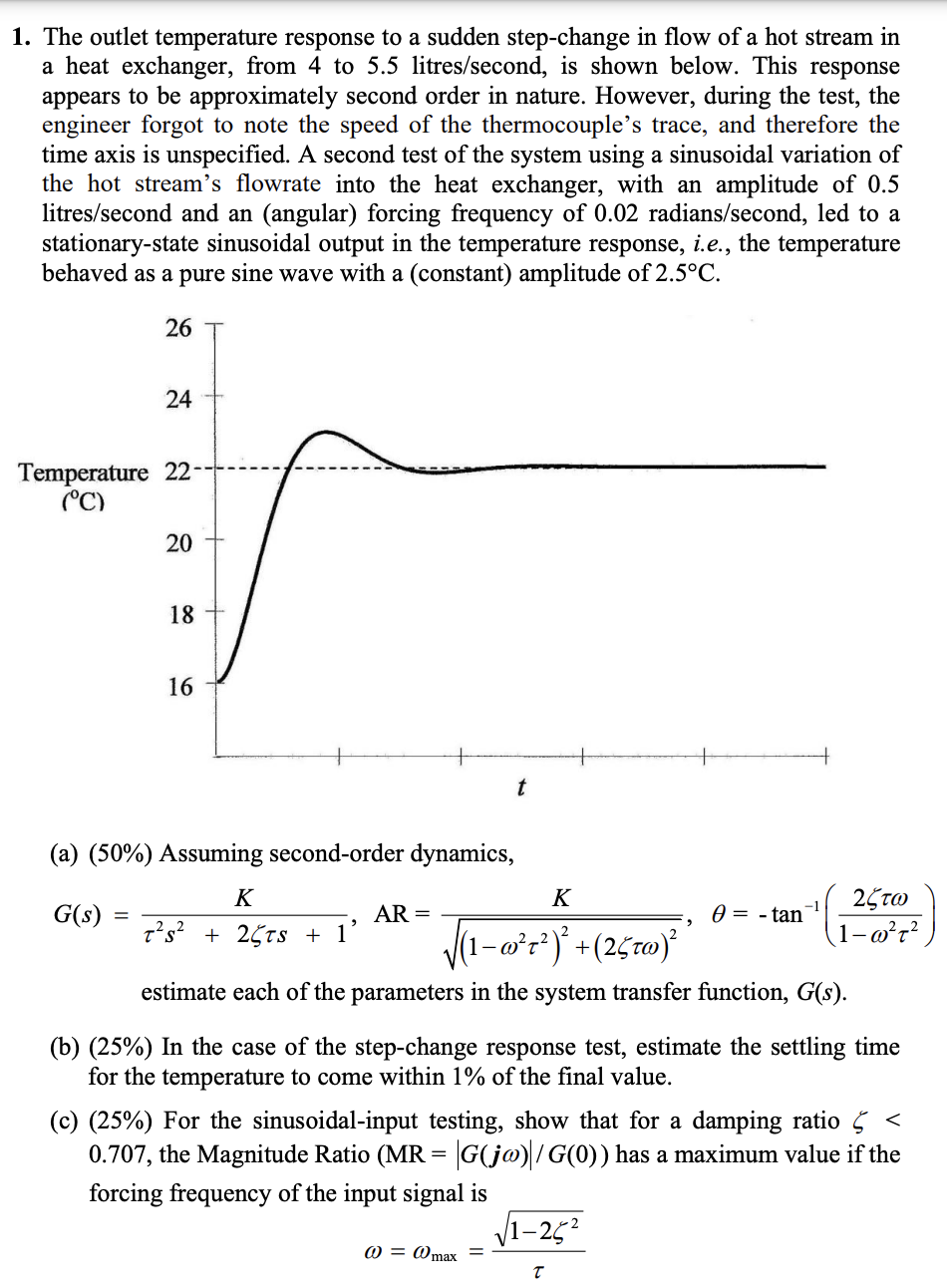Question
The outlet temperature response to a sudden step-change in flow of a hot stream in a heat exchanger, from 4 to 5.5 litres/second, is shown
The outlet temperature response to a sudden step-change in flow of a hot stream in a heat exchanger, from 4 to 5.5 litres/second, is shown below. This response appears to be approximately second order in nature. However, during the test, the engineer forgot to note the speed of the thermocouples trace, and therefore the time axis is unspecified. A second test of the system using a sinusoidal variation of the hot streams flowrate into the heat exchanger, with an amplitude of 0.5 litres/second and an (angular) forcing frequency of 0.02 radians/second, led to a stationary-state sinusoidal output in the temperature response, i.e., the temperature behaved as a pure sine wave with a (constant) amplitude of 2.5C. 
Step by Step Solution
There are 3 Steps involved in it
Step: 1

Get Instant Access to Expert-Tailored Solutions
See step-by-step solutions with expert insights and AI powered tools for academic success
Step: 2

Step: 3

Ace Your Homework with AI
Get the answers you need in no time with our AI-driven, step-by-step assistance
Get Started


